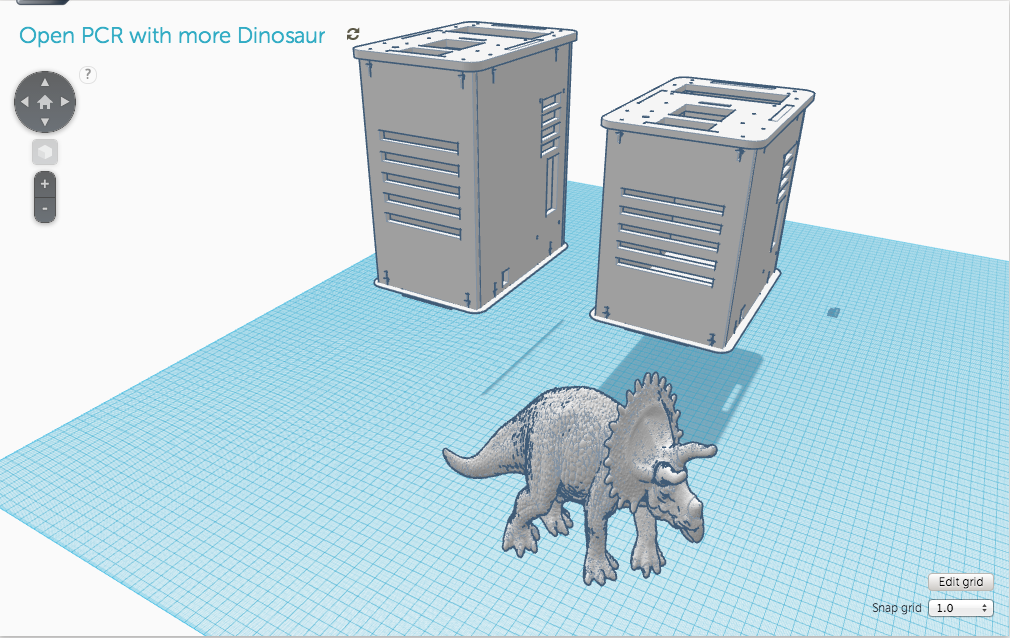BME100 s2014:W Group8 L6
| Home People Lab Write-Up 1 | Lab Write-Up 2 | Lab Write-Up 3 Lab Write-Up 4 | Lab Write-Up 5 | Lab Write-Up 6 Course Logistics For Instructors Photos Wiki Editing Help | ||||||
|
OUR COMPANY
LAB 6 WRITE-UPComputer-Aided DesignTinkerCAD The TinkerCAD software is an online imaging resource that is very similar to products such as SolidWorks. The differences between TinkerCAD and SolidWorks is mostly twofold. First, the cost of TinkerCAD is free of any charge whilst SolidWorks is a rather high price. Second, the capabilities of TinkerCAD software are slightly less versatile than the SolidWorks software because there are less specific actions a designer can take. The way in which this lab group used TinkerCAD to design modified version of the Open PCR machine we used in lab such that any problems in the design are fixed.
The new Open PCR machine, designed by several members in this lab group, is not completely different than the original machine. In the image, the old machine is on the right, the new machine is on the left. The differences that we made to the machine are as follows. First, we felt that the OpenPCR took too long. We did some calculations for ratios of temperature to the amount of time for the original PCR. The time it now takes do to PCR with the machine is approximately 30 minutes. Second, we made the machine box larger in order to have more room for engineers to fix, tinker with, or study the Open PCR machine. A major problem we had with the size of the box was that the wiring and the machinery in the OpenPCR was so tightly knit in the hardware that we were unable to analyze the machine to see what wires have what purpose and what parts do what actions. And lastly, the test tube holder at the top of the PCR machine has now been made to be removable in order to allow a different sized test tubes to have PCR performed on. For instance, there would be multiple models of the test tube holder such one would be able to hold larger test tubes to hold more chemicals and other materials. Otherwise, this lab group had no other significant problem with the OpenPCR machine. Also, we felt that the design lacked personality; so, we added Bill the Biomedical Dinosaur.
Feature 1: Disease SNP-Specific PrimersBackground on the cancer-associated mutation
Feature 2: Consumables KitThe consumables will all be available at different stations in the same line close together. This way the person gathering supplies is able to simply go down a line and pick up the supplies necessary. One major difference is the micropipettor would be digital and would have a spot for the tube to go.
Feature 3: Hardware - PCR Machine & FluorimeterThe PCR and fluorimeter will be placed close to each other so while one is being used, the other can be watched. The PCR machine will be slightly larger and come with removable tube holders that can hold different sized tubes. The fluorimeter will be a connected system meaning all the parts will be attached. The cradle for the phone will be adjustable so the phone can be secured in and moved up and down. The box with the slide would also be adjustable. There would also be an adjustable track for the phone cradle to move along so it is easy to measure the distance from the phone to the slide.
|
||||||





